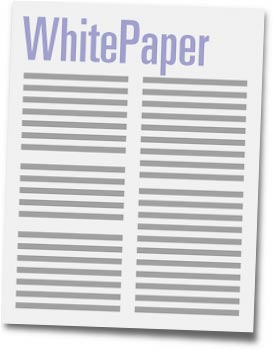Fact Sheet
5 Reasons to Have a Fact Sheet
 There inevitably comes a time in every client interaction in which we recommend that they create a fact sheet, also known as an information paper or white paper. The fact sheet is one of the most simple, effective pieces of corporate communication. Why? Here are five good reasons.
(1) Fact sheets are short. The rule of thumb is to keep a fact sheet to one page. One page is all you need to communicate the key messages about your company or one of your company’s products, services or issues. One page is also all that people will read. No one has the time or wants to read long content. If your fact sheet is bleeding over to two pages, revise it and revise it again until it’s one page. Take out all unnecessary points and words. If you’re finding it impossible to get your fact sheet to one page, chances are good that you need another fact sheet to tackle a portion of the information. Whatever you do, don’t make the font miniscule to pare down the text.
There inevitably comes a time in every client interaction in which we recommend that they create a fact sheet, also known as an information paper or white paper. The fact sheet is one of the most simple, effective pieces of corporate communication. Why? Here are five good reasons.
(1) Fact sheets are short. The rule of thumb is to keep a fact sheet to one page. One page is all you need to communicate the key messages about your company or one of your company’s products, services or issues. One page is also all that people will read. No one has the time or wants to read long content. If your fact sheet is bleeding over to two pages, revise it and revise it again until it’s one page. Take out all unnecessary points and words. If you’re finding it impossible to get your fact sheet to one page, chances are good that you need another fact sheet to tackle a portion of the information. Whatever you do, don’t make the font miniscule to pare down the text.
18 August, 2011
/ 0 Comments
Fact Sheet Critiques
The following are a few little improvements for some big companies' fact sheets. Our hope is that our critiques of these fact sheets will help make yours even better than it is.
07 July, 2009
/ 2 Comments
How to Use Your Fact Sheet as a Springboard
Our How to Write a Fact Sheet post is one of our most widely read tips, so we wanted to give you some information on how to use your fact sheet as a springboard to create your other company communications.
04 May, 2009
/ 1 Comment
Top 3 Rules for a Powerful Fact Sheet
Our How to Write a Fact Sheet post has consistently been one of our most popular tips over the past few years. To follow up on that, we wanted to provide you with our top three rules for a powerful fact sheet. It is important to note here that a fact sheet is an introductory educational piece that spurs initial action, such as requesting more information, checking out a website, visiting a store, etc. The rules below are essential though often over-looked, yet, if followed, they are sure to boost the communication of your key messages to your target publics.
08 April, 2009
/ 1 Comment
How To Write a Fact Sheet
 So, you know how to write a press release, but how do you communicate more general information about your business, product or service? A fact sheet, also referred to as white paper, information paper, or information sheet, is your answer. A fact sheet is an important, at-a-glance tool used in public relations to provide an overall view of your business. Though fact sheets can stand alone, they are more commonly used to supplement a news release or website, anchor a press kit, or replace a brochure.
A fact sheet is generally one or two pages and includes the who, what, when, where, why and how about a business. Components of a fact sheet include the below. Click here for a fact sheet template.
So, you know how to write a press release, but how do you communicate more general information about your business, product or service? A fact sheet, also referred to as white paper, information paper, or information sheet, is your answer. A fact sheet is an important, at-a-glance tool used in public relations to provide an overall view of your business. Though fact sheets can stand alone, they are more commonly used to supplement a news release or website, anchor a press kit, or replace a brochure.
A fact sheet is generally one or two pages and includes the who, what, when, where, why and how about a business. Components of a fact sheet include the below. Click here for a fact sheet template.
06 April, 2009
/ 2 Comments



